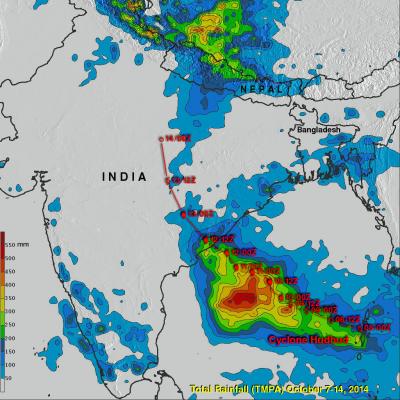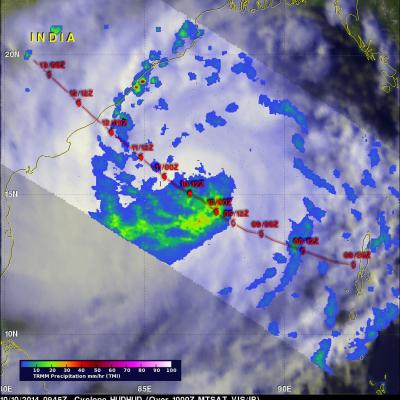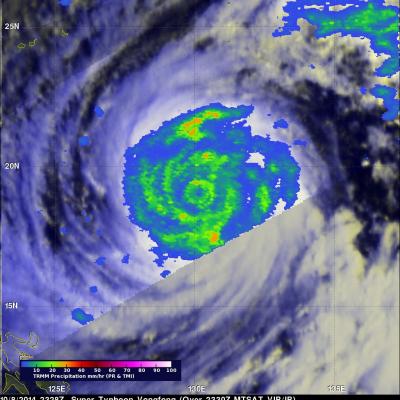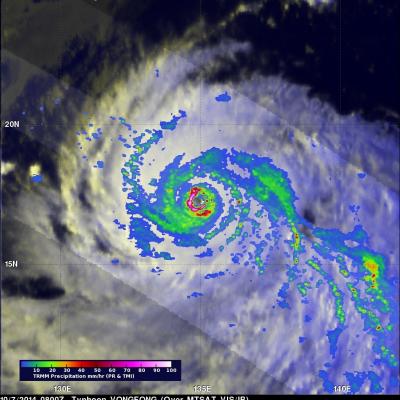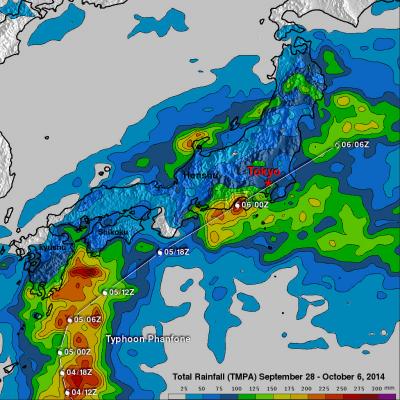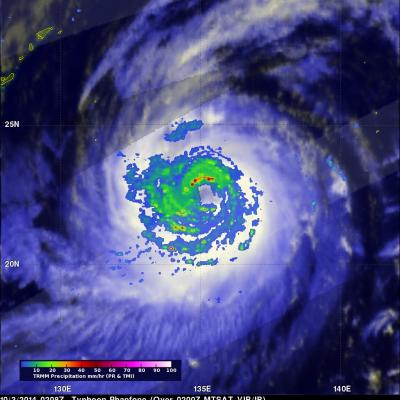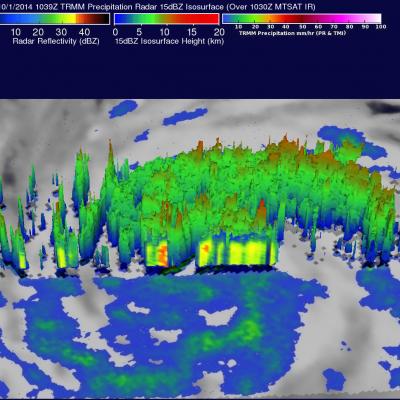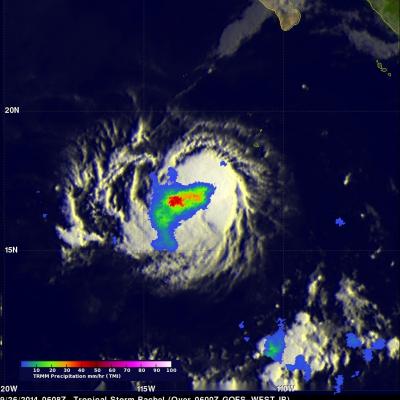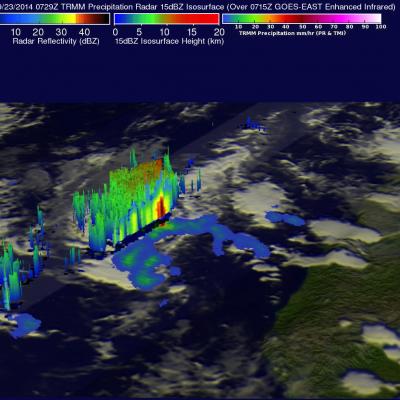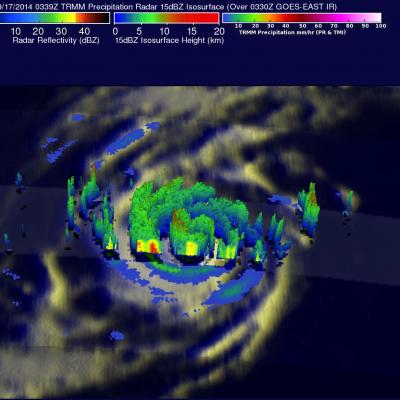Cyclone Hudhud Makes Landfall, Brings Potential for Heavy Rains to Himalayas
Cyclone Hudhud, which reached the equivalent of a category 4 hurricane on the US Saffir-Simpson scale over the Bay of Bengal, weakened slightly before making landfall Sunday morning (local time) on the central southeast coast of India near the port city of Visakhapatnam. Hudhud came ashore with wind gusts of up to 120 mph and so far is being blamed for 24 fatalities in India. The TRMM-based, near-real time Multi-satellite Precipitation data (TMPA) analysis is used to monitor rainfall over the global Tropics. A TMPA rainfall analsis for the period 7-14 October 2014 over India and the


